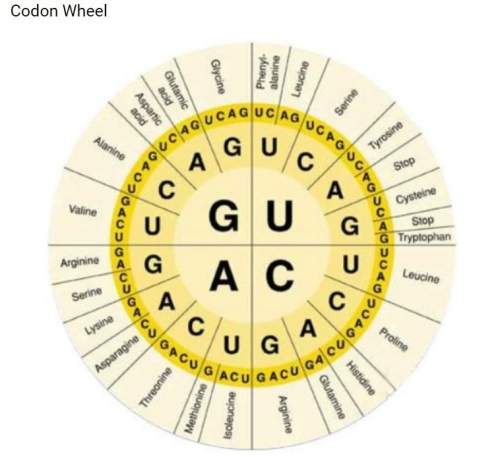
TYPES OF MUTATIONS
Pretend that this list a nitrogen bases is a DNA strand. For each of the question below figure out what changes occurred and therefor what KIND of mutation it is. Choices are:
Insertion, deletion, and substitution (AKA Point mutation)
Original DNA = AUGCCGGTTAUU
11) AUGGCCGGTTAUU
12) AUGCGGTTAUU
13) AUGCCGGTTUUU
14) AUGCCGCTTAUU
15) AUGCCGGGTTAUU
16) Explain which mutation types lead to a frame shift, what a frame shift is, and how it can change a protein that is made from the DNA strand.

Answers: 1
Other questions on the subject: Biology


Biology, 22.06.2019 13:00, traphard979
Suppose you are provided with an actively dividing culture of e. coli bacteria to which radioactive thymine has been added. what would happen if a cell replicates once in the presence of this radioactive base?
Answers: 1

Biology, 22.06.2019 15:30, Calebmf9195
(me out over the last several centuries, scientists have made the following broad observations while investigating several branches of the life sciences: -the fossil record shows that different types of organisms have existed at different times in earth's history. -many organisms have similar body structures that seem to be adapted to different ways of living in their environment. -organisms of different species often share similarities in stages of embryonic development. -many species share genetic similarities, and almost all organisms use the same basic building blocks to construct proteins. -often, the extent of two species' similarities can be predicted from their geographic closeness to each other. -a great deal of change has been observed among species that have experienced strong selective pressures through many generations. scientists have carefully considered and rigorously tested the observations listed above. when scientists offer a of these observations, they are making 1.) testable explanation, deductive explanation 2.) scientific interference, scientific law
Answers: 3
Do you know the correct answer?
TYPES OF MUTATIONS
Pretend that this list a nitrogen bases is a DNA strand. For each of the questio...
Questions in other subjects:





Social Studies, 22.07.2019 10:10



Biology, 22.07.2019 10:10

History, 22.07.2019 10:10

Biology, 22.07.2019 10:10







